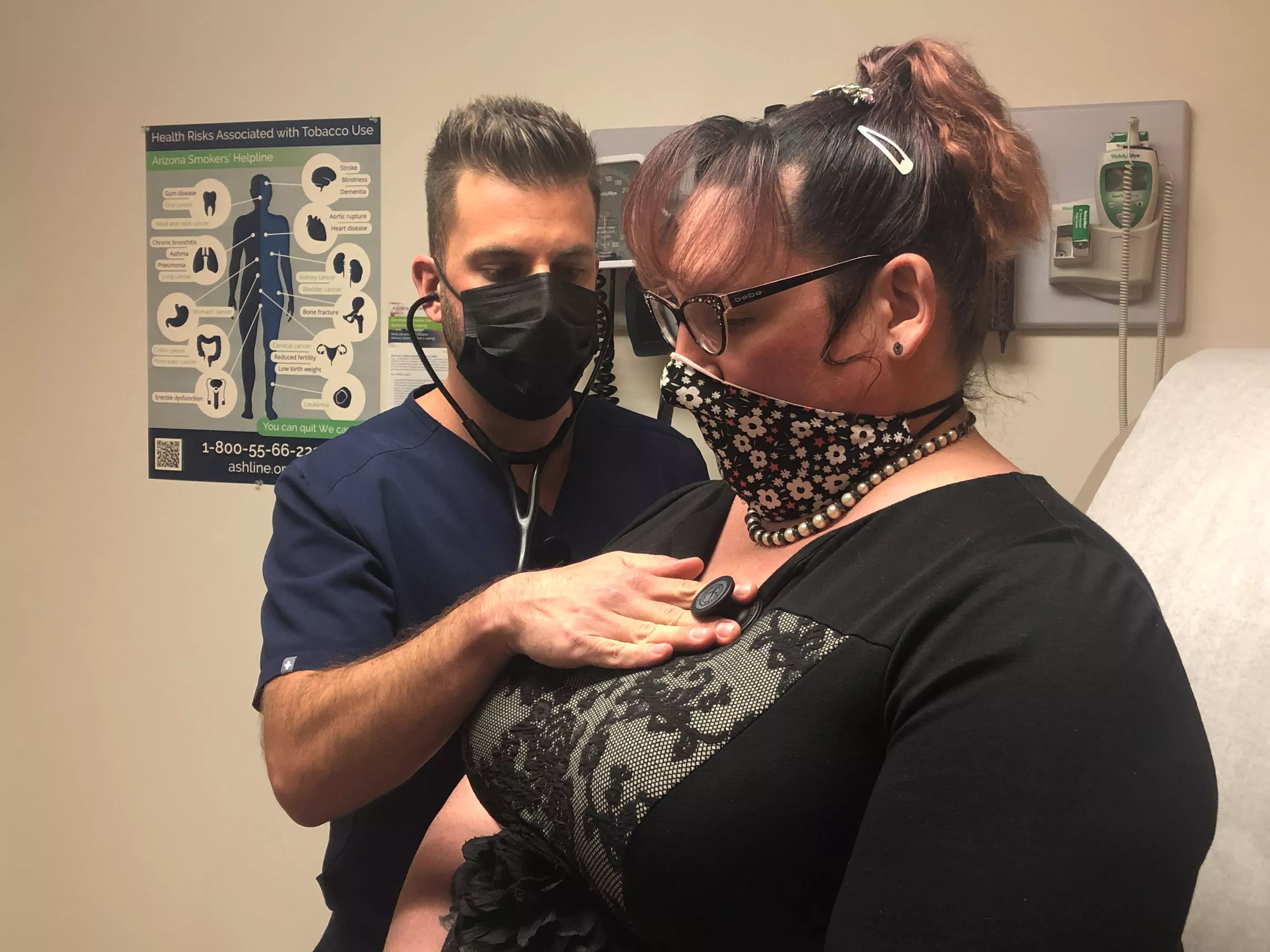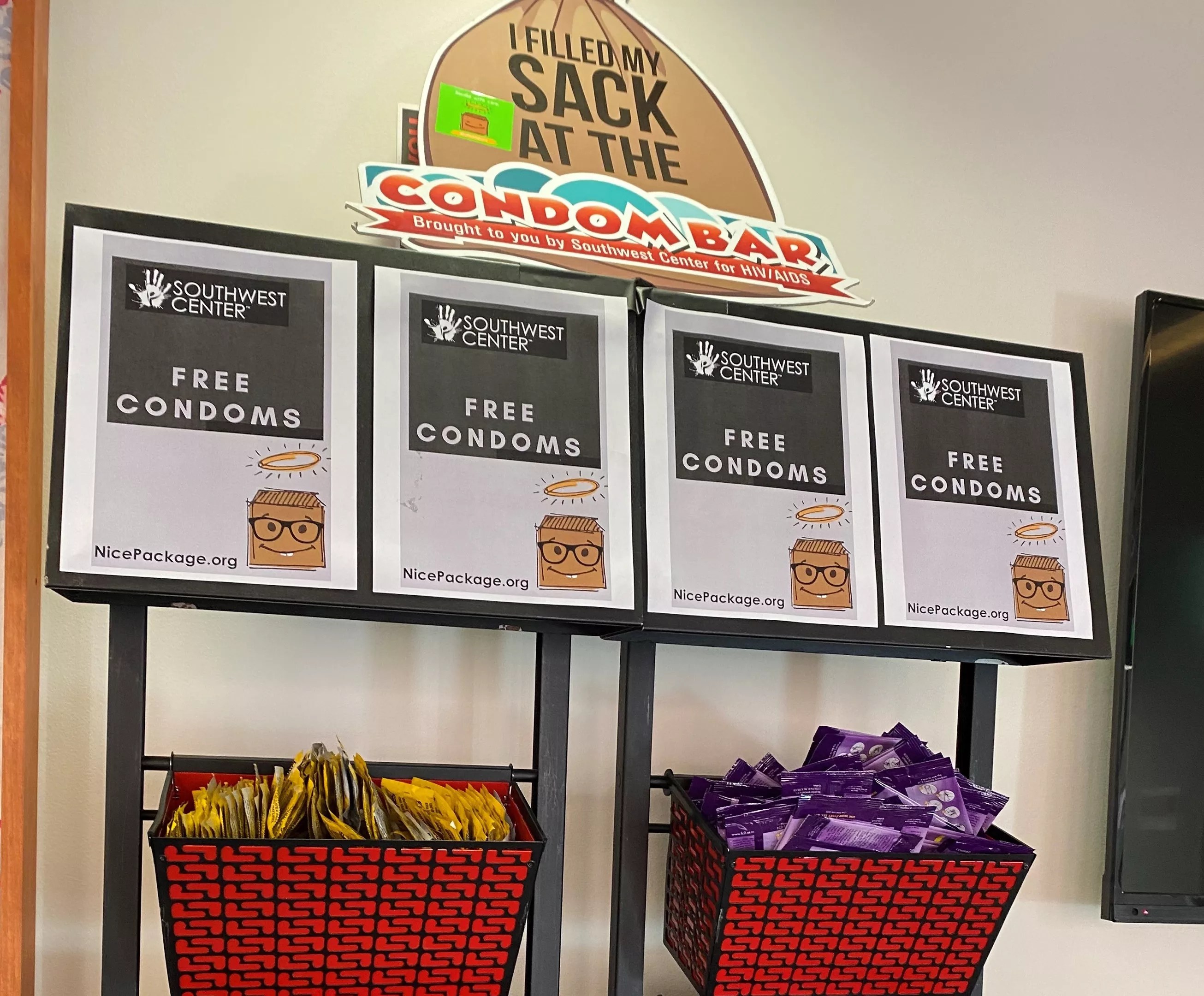
Southwest Center

Audio By Carbonatix
Across the nation, sexually transmitted infections have been on the rise, and Maricopa County is no exception. Syphilis infections in the county have exploded in recent years, while gonorrhea and chlamydia cases are on the rise, too.
The number of new HIV cases, though, has stabilized.
Why is this happening, and what can people do to protect themselves?
From 2016 to 2021, syphilis cases jumped 175 percent, gonorrhea increased 70 percent, and the rate of chlamydia was up 21 percent, according to data from the Maricopa County Department of Public Health. The spread of congenital syphilis – transferred to a child by its mother during pregnancy – was even more shocking: up 800 percent during that span.
We’re thankful for you. Are you thankful for us?
We feel thankful for our staff and for the privilege of fulfilling our mission to be an unparalleled source of information and insight in Phoenix. We’re aiming to raise $30,000 by December 31, so we can continue covering what matters most to this community.
Help us continue giving back to Phoenix.
The good news is the number of HIV cases has stabilized, with rates not varying much for the same time frame. The county saw 531 new HIV cases in 2016 and 542 in 2021. The Arizona Department of Health Services reported 552 new HIV infections in Maricopa County in 2021.
The rise in STI rates could be the result of a number of factors, including an increase in testing, reduced condom usage, and a spike in sexual activity as the coronavirus pandemic subsided, according to health experts. Gay and bisexual men taking the medication PrEP – pre-exposure prophylaxis – could also be a factor. The daily pill reduces the risk of contracting HIV from sex by about 99 percent when taken as prescribed. PrEP access requires STI testing every 90 days but could also contribute to lower condom usage during sex.
“Some people may not be using condoms because they are no longer concerned about HIV transmission,” said Melanie Taylor, a medical epidemiologist and infectious disease physician for the Maricopa County health department.
The agency does not ask people with STIs about condom use, and won’t publicly report STI cases by risk categories, including sexual orientation – though the state health department does so for HIV cases. In Maricopa County, nearly 60 percent of new HIV cases in 2021 were among men who have sex with men, according to the state agency.
Taylor Piontek, a family nurse practitioner and director of clinical services at Southwest Center, said the organization is seeing increases in STIs across all populations, regardless of sexual orientation or demographic. The Southwest Center focuses on health care for LGBTQ people but patients come from “all walks of life,” he said.
“I don’t necessarily think it’s because they’re on PrEP,” Piontek said. “I think most people just don’t like condoms. They don’t get the same sensation.”
Both Taylor and Piontek said that more people are getting tested for STIs, which they applaud. Piontek said that in the early days of the coronavirus pandemic when people were staying home, Southwest Center was seeing fewer people for testing even though it conducted telehealth visits and offered at-home tests.
Now, STI testing is more available. “Because more people are getting tested, we’re seeing more STI-positive results,” Piontek said.
Taylor also noted that more people might be getting tested – and more often – because they’re hearing about the increase in STI rates.
The STI numbers could also be spiking after the pandemic thanks to supply chain issues, according to the Centers for Disease Control and Prevention. A lack of STI test kits and lab shortages could have caused undercounts of infections followed by a sharp rise when supplies normalized, according to the CDC. With lower testings, people might have had STIs longer, making it more likely that they’d spread them, the CDC added.
Piontek suggested a rise in sexual activity once shelter-in-place orders were lifted might have led to STI increases, too. “People have more partners, more apps for sexual encounters,” he said.

Southwest Center features a free condom bar. The agency distributed 1.7 million condoms in 2022.
Southwest Center
‘You Really Need to be Tested’
So what can people do? Condoms are helpful in lowering the risk of spreading or contracting STIs, but they’re not 100 percent effective, Piontek noted. That said, he recommends them to all his patients. Southwest Center distributed 1.7 million condoms throughout Arizona and southern Nevada in 2022 through a condom bar in its clinic and by mail through nicepackage.org.
Taylor said that testing is also crucial to preventing the spread of STIs.
“In order to really understand whether or not you have an STI, you really need to be tested,” she said. About 80 percent of the time, she added, STIs can occur without symptoms.
Piontek said that it’s particularly likely to have no symptoms if gonorrhea or chlamydia occurs in the throat or rectum. Symptomatic individuals with gonorrhea might see a green-yellow genital discharge, while chlamydia presents as burning with urination and an increased frequency of urination, he added.
Syphilis infections sometimes show up as “a singular lesion within a few months of infection – genital or oral,” Piontek said, and it’s typically painless, so it’s easy to overlook. At around six months, a person might see a rash on the palms of their hands and the soles of their feet.
But syphilis can be dangerous as well. If untreated, it can lead to loss of sight and hearing and can affect the brain, blood, spleen, bones, and heart in adults.
Testing for STIs is particularly important for pregnant women, Taylor noted, because of the surge in congenital syphilis, which, if untreated, can lead to a child’s severe disability and death. The disease also is responsible for an increase in stillbirths.
“Syphilis transmissions from a pregnant woman to her child, in fact, can be prevented if the pregnant woman goes to prenatal care,” Taylor said. That includes syphilis screening and treatment, if positive, she added.
While syphilis treatment is available from the county health department, Southwest Center hasn’t been able to offer it for “quite a while,” Piontek said, due to the high cost of penicillin shots. The center hopes to resume offering treatment in mid-to-late 2023 at a low or reduced cost on a sliding scale.
The Maricopa County Department of Public Health at 1645 East Roosevelt Street is open on a walk-in basis or by appointment from 8 a.m. to 5 p.m. Monday, Tuesday, Thursday, and Friday, and 9 a.m. to 5 p.m. Wednesday. Testing costs $20 and includes treatment for the patient and sexual partners.
The department also collaborates on outreach events in the community with Southwest Center, Chicanos Por La Causa, and others. Visit stdaz.com.
Southwest Center’s clinic is open for free testing at 1101 North Central Avenue, No. 200, on a walk-in basis only from 8 a.m. to 4 p.m. Monday and Friday, and 8 a.m. to 6 p.m. Tuesday, Wednesday, and Thursday.